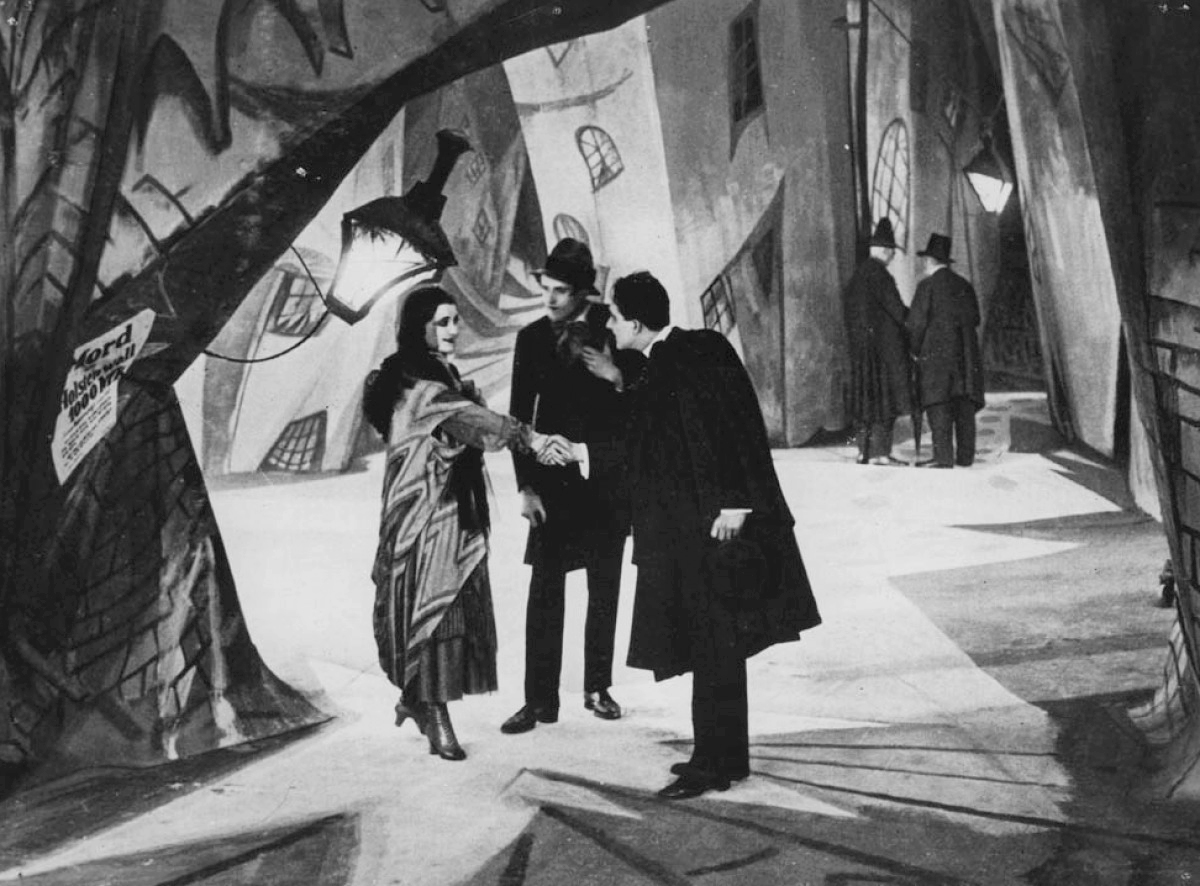 Fig Two - Scene from the film
Fig Two - Scene from the film
The cabinet of Dr. Caligari (1920) is a silent horror film directed by Robert Wiene. The film is about the deranged Dr. Caligari and his faithful sleepwalking Cesare, who are linked to a number of murders in a mountain villiage.
“The first thing
everyone notices and best remembers about "The Cabinet of Dr.
Caligari" (1920) is the film's bizarre look.”(Roger Ebert, June
2009). The setting of the film is what
is the most unique thing about it, everything is asymmetrical and odd looking,
buildings and streets are more like canvases for scenery and objects.
“It is difficult to imagine the film done better with the benefit of sound, colour, or any innovation since.” (Nick Hilditch, March 2001). The music
plays a massive part in the film, setting the scene and emotion of the film. There’s a scene where Jane is anxious so the music picks up speed to show this
to the audience as the actors can only portray so much emotion in the acting.
“A ghostly looking
Francis (Friedrich Fehér) recounts to an equally pale friend his strange tale
of woe involving his fiancée Jane (Lil Dagover).” (Cole Smithey, October
2011). The make up in the film on the main
protagonists is heavier around their eyes to make their eyes stand out more to
help caption emotion their feeling, which also gives the film a gothic feel
towards it.
Drama staging rules are present in the film as the actors
never really have their backs towards the camera, the drama rules mainly stood
out near the end an actor goes to grab another actor to his right so naturally
he would use his left arm but so he doesn’t show his back towards the camera he
uses his right arm to grab the other actor instead.
Overall the film is unique with, no other film like it. Over
the top acting and music to set the emotions in the film, there’s elements of
gothic in the makeup which is also used to help show emotion through the actors
expressions.
Illustrations
Bibliography

'everything is symmetrical' - i think you mean 'asymmetrical'?
ReplyDelete“The film done better with the benefit of sound, colour, or any innovation since.” (Nick Hilditch, March 2001). ??? I don't understand this quote - 'The film done better' is not even proper English. Did you copy it correctly?
It's great that you're getting stuck on like this, lloyd - but don't forget a bit of polish into the bargain too!
Ok I will sort it out. :)
ReplyDelete